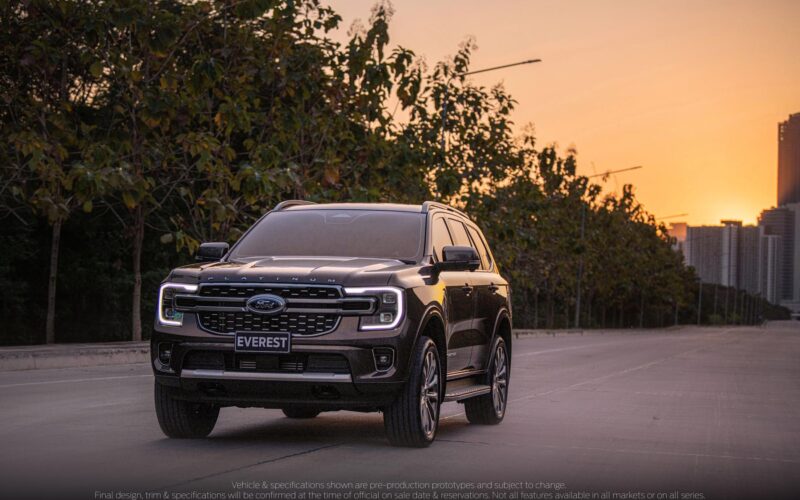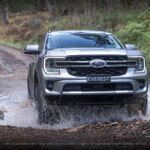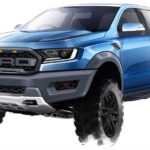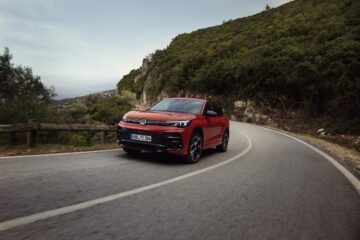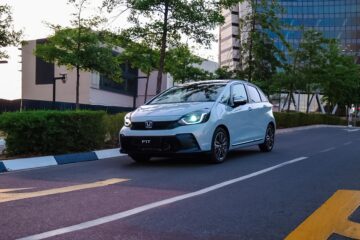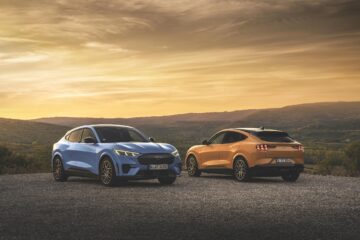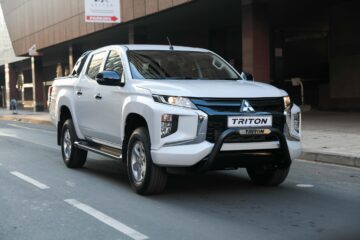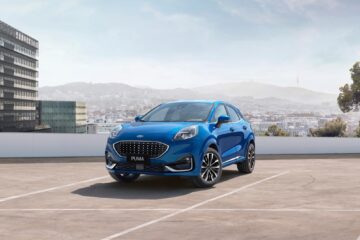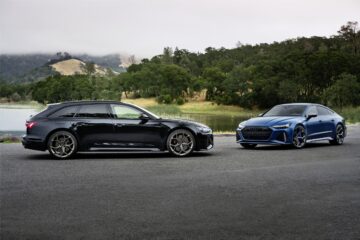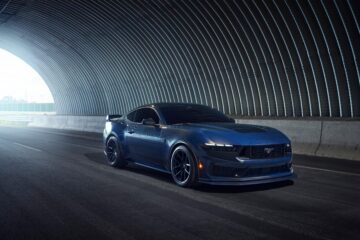| THE next-generation Ford Everest has arrived. The next generation Everest blends adventure-ready capability with exceptional comfort and customer-focused technology in a rugged, refined and fun to drive SUV. Engineered to excite, the Everest has been built for the adventurous – with capability at its core. Inside, premium levels of craftsmanship have created a quiet and refined sanctuary for up to seven occupants, while class-leading technology and safety make every journey more memorable. “When we started imagining the next-gen Everest, we started not at the beginning but at the end: With our customers,” said Ian Foston, chief platform engineer for Everest. “They’re people who like adventure, recreation and being able to go out with family and friends. Whether they’re conquering sand, rocks or city life, these customers appreciate the utility, capability and spaciousness of an SUV.” Armed with more customer input than ever before, Foston said the objective for the next-gen Everest was clear: Tough on the outside, sanctuary on the inside, amazing capability underneath. To showcase this, three grades of the next-gen Everest were presented at reveal; Sport, Titanium+ and a new flagship grade, Platinumi. A range of different variants and models will be available, depending on market, to meet the needs of our customers. Rugged outside, a sanctuary within Everest’s wider track and longer wheelbase enabled designers to create a more progressive, muscular appearance. Ford’s global design DNA is reflected in the C-clamp headlamps and strong horizontal upper grille bar. The front end also has a mix of horizontal and vertical elements, which add to the stable appearance. On the sides, there is a strong shoulder line front to back, while the wider track results in a more dramatic swell over the wheels, enhancing the strong and modern look. “We showed customers the Everest at several points during the design process, and their feedback was consistent: They loved the exterior with the strong and rugged design, but they also thought it was sleek and modern,” said Max Wolff, design director for China and Ford’s International Markets Group (IMG). “They said that the Everest would give them the confidence to go off-road; it looks like a proper SUV.What customers wanted on the interior was a different story. Inside, they wanted a sanctuary. One of the first things you’ll notice when you get into a new Everest is how quiet it is, Wolff said. “ “We’ve all been in vehicles with multiple rows of seats, where you have to twist your head around and almost shout to be heard by passengers in the second or third rows. That’s an issue we wanted to solve for Everest, so the interior would be a quiet place in which you can easily talk to your family or friends and enjoy the journey together,” he said. Designers also put a lot of thought into the function and feel of the interior, taking inspiration from modern homes and bringing in plush materials, premium finishes and ambient lighting all in areas where customers can appreciate them the best. Everest’s sense of spaciousness is amplified by the full-width coast-to-coast instrument panel and centre console with dual cupholder recesses, plus dash-mounted ‘pop out’ cupholders for front seat occupants. High-series models are equipped with integrated wireless charging, a svelte new leather trimmed e-Shifterii and an electric parking brake. Depending on the variant, heated and ventilated 10-way power adjustable memory function seats are available for the driver and 8-way for the passenger. Heated seats are also available for the second row, depending on the variant.Access to the third-row seats is much easier thanks to second-row seats that slide further forward than before. Additionally, all occupants now have places to store their things and depending on the model, charge their devices with power outlets in all three rows. Ford has prioritised flexible seating in the next-gen Everest; the second-row slides with a 60:40 split seatback and the 50:50 split third row in the seven-seater configuration can be folded at the touch of a button on high series models. Importantly, both the second- and third-row seats have been designed to fold flat to allow for long loads to be carried safely. To stop items falling out of the back when the tailgate is lifted, Wolff’s team created a small lip, affectionately known as the “apple catcher” valley, at the rear of the cargo area. The team also created an underfloor storage space that helps keep the rear of the Everest organised. Customer-focused technologyIn addition to a more refined and comfortable interior, Ford focused on incorporating the latest connectivity and technology features into the next-gen Everest. Depending on trim level, Everest comes with 8- or 12.4-inch digital instrument panels that replace the traditional analogue clusters. Everest also features large, high-resolution portrait 10.1- or 12-inch touchscreens. Next-gen Everest is loaded with Ford’s latest SYNC® 4Aiii system, which comes customer-ready with its voice-activated communications, entertainment and information systems. Additionally, there’s an embedded factory-fitted modem, allowing customers to connect to Everest when linked with the FordPass™ Appiv.v. FordPass enhances the ownership experience with features like remote start, vehicle status check, and remote lock and unlock functions via your mobile deviceiv. The portrait-orientated screen also is linked to a 360-degree camera with split-view display to make parking a breeze in tight urban spaces or to assist when negotiating particularly tricky terrain while out exploring. In addition, customers can control Everest’s new exterior zone lighting system via the touchscreen or the FordPass™ Appi,v, which means they don’t have to park, work, camp or do anything in the dark. New and proven engine line-up Everest customers told Ford that they wanted more power and torque for towing, carrying heavy loads and off-roading, so the team selected Ford’s proven 3.0L turbodiesel V6 engine and refined it for the Everest. It is one of three turbodiesel engine options available at launch, depending on the marketi. “The 3.0L turbodiesel V6 really delivers that big-engine torque and power customers want,” said Pritika Maharaj, Everest program manager. “It feels really tough in the sense that it’s got endless power and torque, but it is also refined and quiet on the road.” While the new 3.0L turbodiesel V6 spearheads the line-up, next-gen Everest gives customers a choice of engines to suit their lifestyles, including Ford’s proven Single-Turbo and the Bi-Turbo 2.0 inline four-cylinder diesels and a 2.3L EcoBoost petrol engine. Depending on the model, either a six-speed automatic or Ford’s efficient 10-speed SelectShift automatic will be available. “Regardless of engine, our customers can be confident that they have the power and torque they need whether they’re towing, heading off-road, or just heading off on a family adventure,” Maharaj said. The Single Turbo diesel engine delivers power, torque and fuel economy, while the Bi-Turbo engine is a sophisticated, performance variant for customers who want more power but need to maintain fuel economy. For petrol lovers, the powerful, direct-injection 2.3L EcoBoost four-cylinder engine delivers a broad, flat torque curve with maximum torque throughout the rev range. This proven EcoBoost engine underpins a range of Ford products globally and will be available on Everest in select markets from 2023. Engineered for adventure A 50mm increase in next-gen Everest’s track helps deliver a more controlled ride on-road, while tweaks to damper settings allowed the team to inject more fun and control into the Everest’s ride, both on- and off-road. “Everest was always well regarded for its plush ride on- and off-road, but the track increase allowed our dynamics team to create a greater connection between vehicle and driver, with a more controlled fun to drive ride around town and on the highway,” said Foston. Want to do some exploring? Next-gen Everest is ready to go, with a choice of two four-wheel drive systems, underbody protection and off-road selectable drive modes plus rear locking differential, two functional tow hooks upfront, and upfitter switches for accessories. The two 4WD systems available are: A two-speed electronic shift-on-the-fly transfer case, also known as a part-time 4WD system; and an advanced, permanent four-wheel drive system that uses an electronically controlled on-demand two-speed electromechanical transfer case (EMTC) with selectable drive modes. Depending on the market, Everest also is available with two-wheel drive. Where available, Everest’s dedicated off-road screen displays vehicle information and a front camera view of the terrain ahead, with predictive overlay guidelines designed to help the driver negotiate obstacles. With a single button press, the driver can view their driveline and diff-lock indicators, steering angle and guides, and vehicle roll and pitch angles. Next-gen Ford Everest has a water wading ability up to 800mm and a maximum braked trailer towing capability of up to 3,500kg (braked)vi, while space in the engine bay allows for a second battery to power aftermarket accessories.Everest’s impressive towing capability is supported by smart technologies that make towing easier. A dedicated tow/haul drive mode has been tuned to optimise gear shift timing to maintain the best power delivery and engine braking when carrying loads, either in a trailer or in the cargo area. In addition, an integrated electric trailer brake controllervii helps deliver smooth and effective control of a trailer’s brake system. Everest’s new camera views help owners guide their SUV into position to connect a trailer, while integrated SYNC® features such as trailer connection checklist and trailer light check help make the job easier. Where available, FordPass™ app users can also test the trailer lights with their smartphone.The new integrated or stand-off roof rails are more than just a design detail; they’re engineered for adventure. The Everest rooftop can now support static loads of up to 350kg and dynamic loads of up to 100kg, providing increased versatility that enables it to carry bikes, canoes, cargo pod or roof-top tent. A universal mounting system allows customers to equip their vehicle with a range of accessories. |
Advertisements

